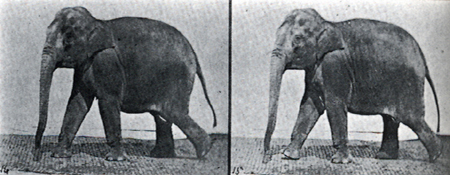 |
||
| Appendix: Osiris and Set | ||
| HOME The Art of Memory Origin Myth Vivid Imagery Memory Is Personal Your Inner Monty Python The Use of Places Poetry and Song The Grid System Why It Works The Number Mnemonic Free Ass-sociate Conclusion |
It is striking that, in its origin myth, the art of memory was born from the need to identify the dead for proper burial. It is tempting to see in this story a reflection of the central Egyptian myth of Osiris. Osiris, lord of the earth, is murdered by his brother Set, who entombs his body in a casket and sends it down the Nile, where it comes to rest on a riverbank and ends up enveloped in a great tamarisk tree. The tree is then cut down and used for the pillar of the house of a local king. Osiris's queen, Isis, with the help of Anubis (the dog-headed god born of Osiris’s tryst with Nephthys), finds this house and becomes a nurse to the king’s children. Eventually, after much wierdness, Isis obtains the box with her husband’s remains, and hides them in a safe place. Later, Set happens upon the box and, recognizing his brother, cuts the body into fourteen pieces and scatters them all over Egypt. Isis sets out in a papyrus boat to recover the pieces of her beloved husband, and each time she finds a piece she builds a tomb. It is only through the love of the queen and various travails in the underworld (detailed in the Book of the Dead) that Osiris can be reconstituted and resurrected. Part of the reason for the elaborate preservation of the body and its features in mummification was the importance of the dead person to retain his or her recognizable form. Thus in the underworld the physical body or khat would be reunited with the other components of the self: the ka (image or double), the ba (soul), the khaibit (shadow), the khu (shining spirit), the sekhem (power) and the ren (name). It is helpful to think of Osiris as that which we want to remember, or, that which we want to grant eternal life. Is “eternal life in the underworld” not the same as memory? Set, the conniving brother of Osiris, represents the power of division, and one might think he is the enemy of memory: forgetting. But division is not all bad, considering that if the parts are recovered, individually enshrined, and given proper burial (i.e. entombment), the whole can be reconstituted – literally, re-membered, put back together – and sometimes this re-putting-together is an enhancement of the original. The artificial memory described in the previous article uses this ability to take apart in order to organize and focus the mind. Without this ability to take things apart and put them back together, nothing would be remembered. (This repeated process is what happens nightly when we dream, too.) Recognizing the dead for (re-)burial is a theme that pops up again in other traditions, including the hermetic traditions of the Renaissance and, later, freemasonry. The Masonic “baptism” ritual that initiates a Fellow Builder into a Master Mason has the initiate play the part of Hiram Abif, builder of Solomon’s Temple, who has been murdered by three of his underlings and given a hasty burial. His body is found, the story goes, in advanced state of decomposition, and is unrecognizable, except for a gold necklace or pendant around his neck. Solomon identifies the necklace as belonging to Hiram, and thus they set out to bring his corpse back to the Temple for a proper burial. At this point, the participants in the ritual attempt to raise him from the grave using the grips (i.e., handshakes) of the lower orders. The initiate/Hiram, lying in his makeshift grave, cannot be raised by these grips. Lastly the officiant gives a prayer and takes the ‘dead’ Hiram’s hand by means of the Master Grip, by which the initiant is raised “from a dead level to a living perpendicular.” |
|
All material copyright 2006
Eric Wargo